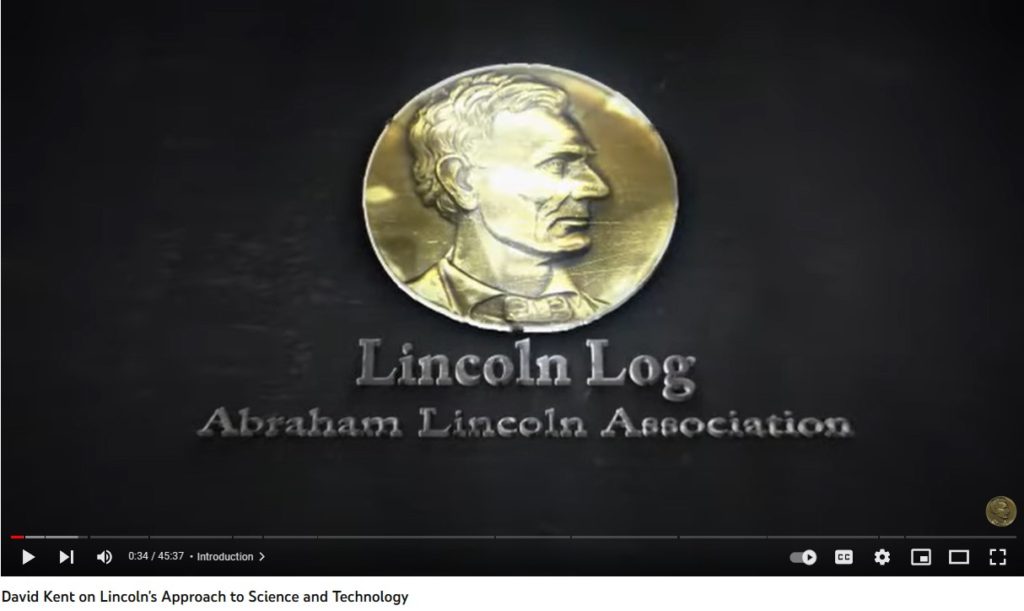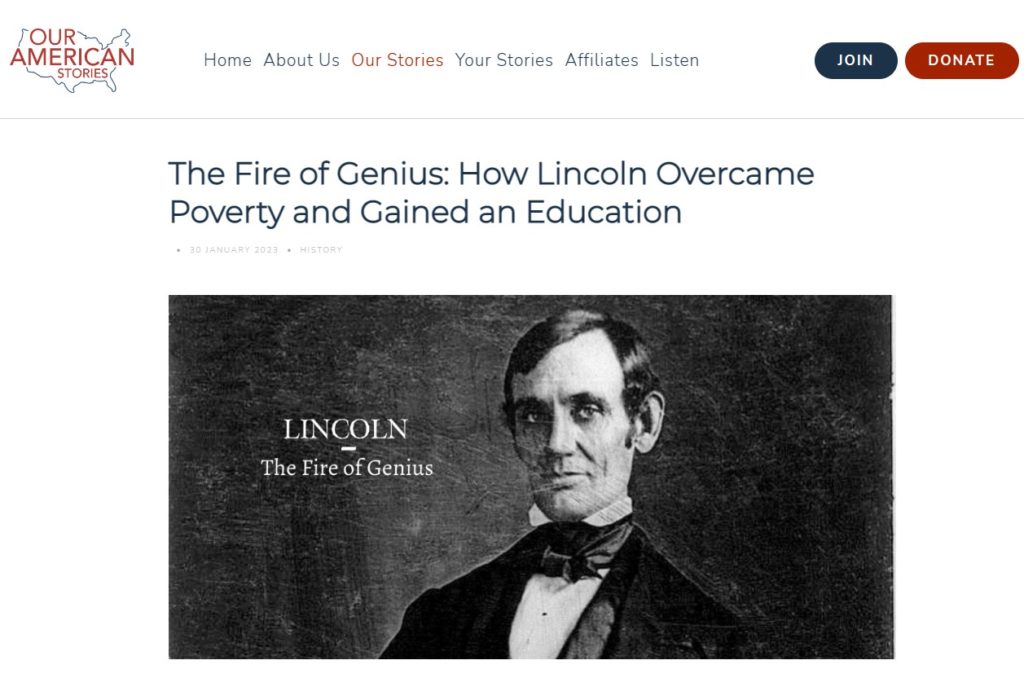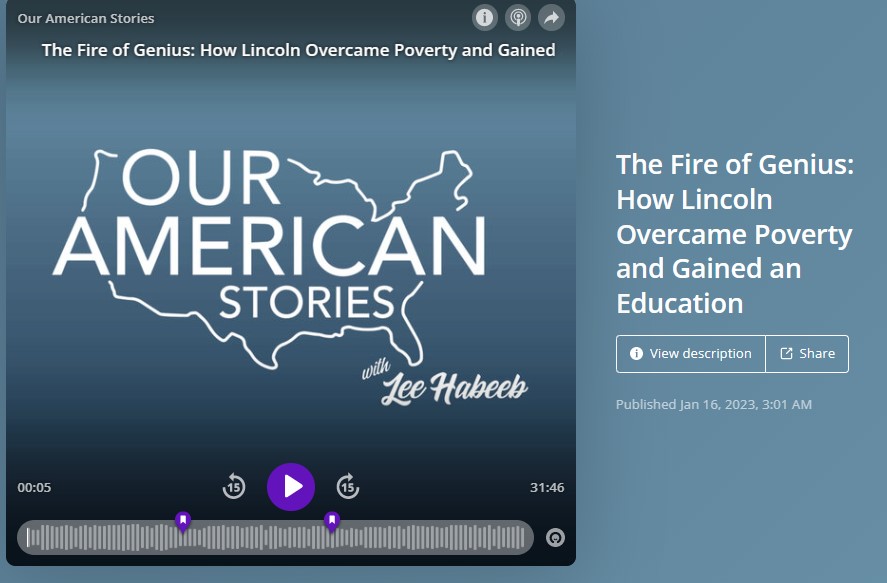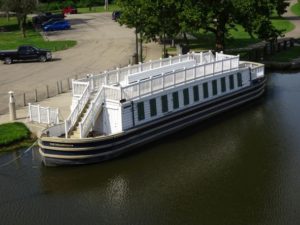 While February 27 is most famous for Abraham Lincoln’s 1860 Cooper Union address, it also is the date on which in 1836 Lincoln bought shares in the stock of the Beardstown and Sangamon Canal. Already the Whig leader in the Illinois state legislator at 27 years old, Lincoln promoted the American System of economic development, promoting internal improvement programs such as canals, roads, navigable rivers, and railroads. The Sangamon River passed by Lincoln’s home in New Salem and had already been a major factor in several incidents in Lincoln’s life as a flatboatman and steamship pilot, so he had made several attempts to improve the navigability of the narrow, curvy river.
While February 27 is most famous for Abraham Lincoln’s 1860 Cooper Union address, it also is the date on which in 1836 Lincoln bought shares in the stock of the Beardstown and Sangamon Canal. Already the Whig leader in the Illinois state legislator at 27 years old, Lincoln promoted the American System of economic development, promoting internal improvement programs such as canals, roads, navigable rivers, and railroads. The Sangamon River passed by Lincoln’s home in New Salem and had already been a major factor in several incidents in Lincoln’s life as a flatboatman and steamship pilot, so he had made several attempts to improve the navigability of the narrow, curvy river.
Among them was a grand scheme to build a canal. In announcing his first run for the state legislature he had calculated that New Salem was between twelve and eighteen miles “in something near a straight direction” above the river’s confluence with the larger Illinois River at Beardstown, much shorter than its thirty- to thirty-five-mile meandering path. Perhaps recalling his own time working the Louisville and Portland Canal on the Ohio River, he noted that by “removing the turf” along the prairie land between the two points, a canal could be built to bypass much of the narrow and shallower curves of the river and provide for a shorter and more maneuverable flow for larger boats to travel. Even if this were done on a piecemeal basis where short canals were used to bypass the river’s normal zigzag course, it would “lessen the distance” and improve navigability. Lincoln did not know the cost of this option, but he felt it probably less than the cost of railroads, the use of which could be revisited as finances became available. Either choice for internal improvements would provide a “more easy means of communication than we now possess, for the purpose of facilitating the task of exporting the surplus products of its fertile soil, and importing necessary articles from abroad.”
While his first attempt failed, two years later he ran again and was elected. His postmaster and surveying jobs had allowed him to meet more people as he roamed the county delivering mail and platting out property. He had also gained some influential friends during his short time in the war. Lincoln’s proposal for a canal from the Illinois River in Beardstown to the Sangamon River gained him significant support. Since such a canal would allow year-round shipment of products from New Salem and the surrounding county, a large number of residents would see financial benefit.
The Beardstown and Sangamon Canal that Lincoln had proposed was authorized but later abandoned when an engineering survey determined the cost to be at least four times the initial estimate. But Lincoln had his eye on a much more feasible canal. He proposed the Illinois and Michigan canal bill in the state legislature, which passed by a 40–12 vote. That project became endangered after a nationwide financial crisis wiped out the possibility of more and more improvement projects, but Lincoln narrowed in his focus to insist the Illinois and Michigan Canal be completed. He saw that canal as a vital cog in the machinery of commerce. It was eventually built and succeeded in stimulating the economy of Illinois and the nation.
After four terms (eight years) in the Illinois legislature, Lincoln chose not to run again. He served one term in the U.S. House of Representatives, again choosing not to run for reelection. A long period ensued making a living as a lawyer without any political office ended with that famous Cooper Union speech. Impressing New York, New England, and the rest of the northern states, Lincoln won the Republican party nomination shortly after and was elected president in November.
The rest, as they say, is history.
[Adapted from Lincoln: The Fire of Genius]
[Photo by David J. Kent, taken at LaSalle IL, 2018]

Lincoln: The Fire of Genius: How Abraham Lincoln’s Commitment to Science and Technology Helped Modernize America is available at booksellers nationwide.
Limited signed copies are available via this website. The book also listed on Goodreads, the database where I keep track of my reading. Click on the “Want to Read” button to put it on your reading list. Please leave a review on Goodreads and Amazon if you like the book.
You also follow my author page on Facebook.
David J. Kent is President of the Lincoln Group of DC and the author of Lincoln: The Fire of Genius: How Abraham Lincoln’s Commitment to Science and Technology Helped Modernize America and Lincoln: The Man Who Saved America.
His previous books include Tesla: The Wizard of Electricity and Edison: The Inventor of the Modern World and two specialty e-books: Nikola Tesla: Renewable Energy Ahead of Its Time and Abraham Lincoln and Nikola Tesla: Connected by Fate.



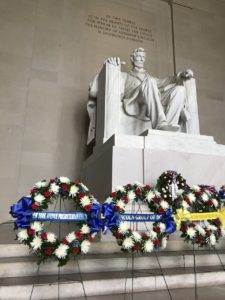 Finally! The long-delayed renovations to the Lincoln Memorial are about to start. My colleague in the Lincoln Group of DC, Ed Epstein, reported on the official U.S. National Park Service announcement this morning. Writing on the
Finally! The long-delayed renovations to the Lincoln Memorial are about to start. My colleague in the Lincoln Group of DC, Ed Epstein, reported on the official U.S. National Park Service announcement this morning. Writing on the 